It’s the end of summer, so why not go out with a bang and make caponata? Caponata is a Sicilian vegetable stew or compote. It slightly resembles Provencal ratatouille, but while both are tomato-rich stews consisting of a bounty of summer vegetables and aromatics influenced by their geography, they diverge from there.
Ratatouille typically includes a variety of vegetables, such as eggplant, squash, and peppers, and is bright and restrained in its summery balance. Caponata, on the other hand, is feistier and more fragrant, with a decidedly sweet and sour, or agrodolce, nod to its Italian roots and Greek and Moorish influence.
Eggplant is the dominant vegetable in caponata, cooked until golden and squidgy, and punctuated with briny olives and capers, laced with vinegar, and refreshed with sweet raisins and honey. If you’re going to salute the end of summer, you might as well exit loudly with this lip-smacking condiment.
Caponata is traditionally served as an appetizer on toasted bread or crostini or as a side dish. It’s also a bright garnish for fish and poultry. If possible, make caponata a day in advance and refrigerate overnight to allow the flavors to develop.
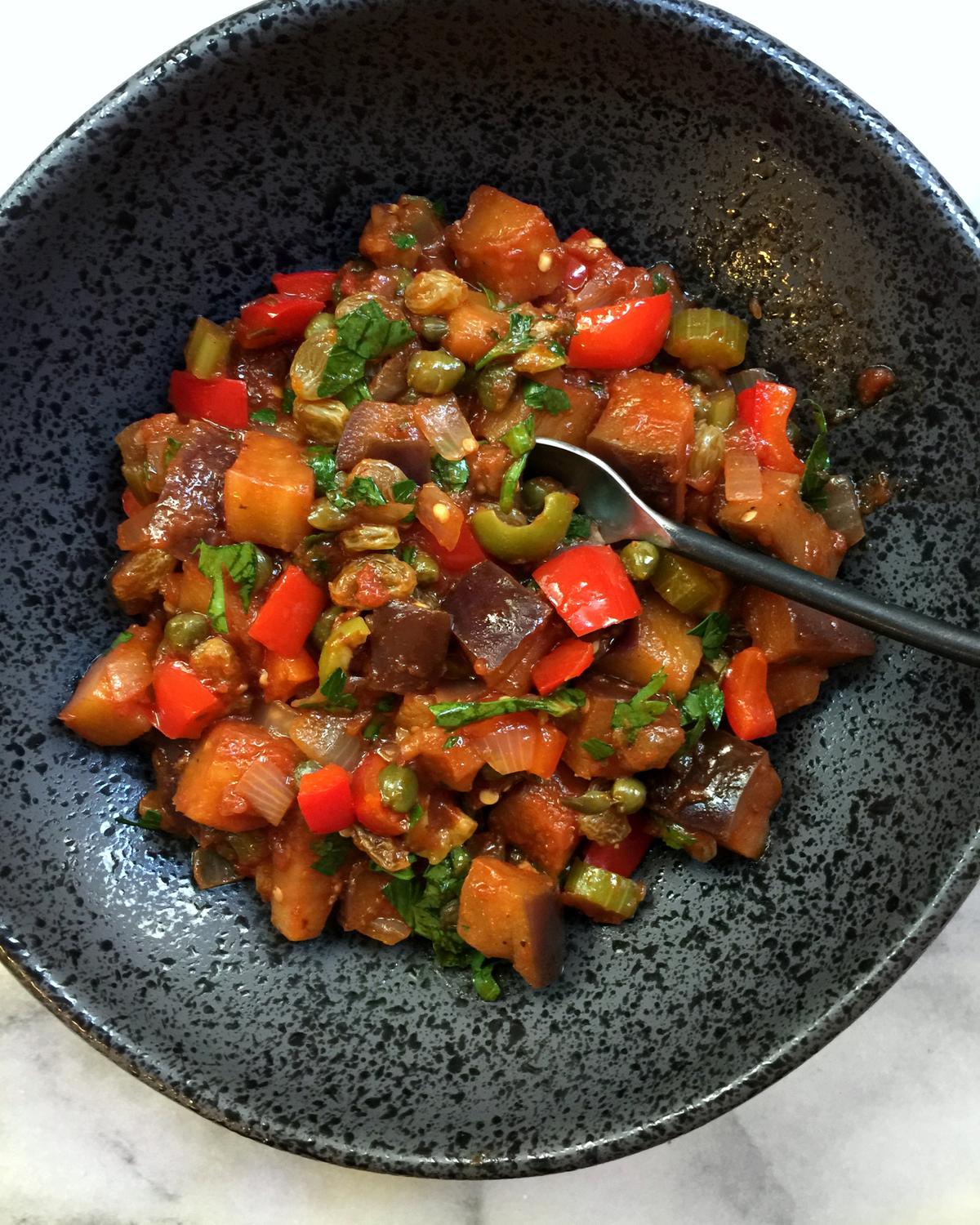
Caponata
Active Time: 30 minutes Total Time: 30 minutes, plus cooling time- Extra-virgin olive oil
- 1 medium globe eggplant, about 1 1/4 pounds, cut into 3/4-inch cubes
- Kosher salt
- 1 medium yellow onion, chopped
- 1 red bell pepper, seeded and diced
- 1 large celery rib, finely diced
- 3 garlic cloves, minced
- 1/2 teaspoon dried oregano
- 1/2 teaspoon crushed red pepper flakes
- 1 cup crushed Italian plum tomatoes
- 1/3 cup golden raisins
- 1/4 cup coarsely chopped green olives, such as Castelvetrano
- 3 tablespoons capers, drained
- 2 tablespoons red wine vinegar
- 2 tablespoons balsamic vinegar
- 2 teaspoons honey or brown sugar
- 1/2 teaspoon freshly ground black pepper
- 2 tablespoons chopped Italian parsley
Add 1 tablespoon oil to the same skillet, then add the onion and cook over medium heat until soft, about 2 minutes. Add the red pepper and celery and sauté until bright and crisp-tender, 2 to 3 minutes. Add the garlic, oregano, and red pepper flakes and sauté until fragrant, about 1 minute. Stir in the tomatoes, raisins, olives, capers, vinegars, honey, and black pepper. Reduce the heat to medium-low and simmer for 8 to 10 minutes. Return the eggplant to the skillet and continue to simmer until the eggplant is very soft, about 5 minutes more.
Taste for seasoning and add additional salt if desired. Remove from the heat and stir in the parsley. Cool completely to serve. If possible, refrigerate the caponata overnight to allow the flavors to develop. Serve at room temperature or chilled.

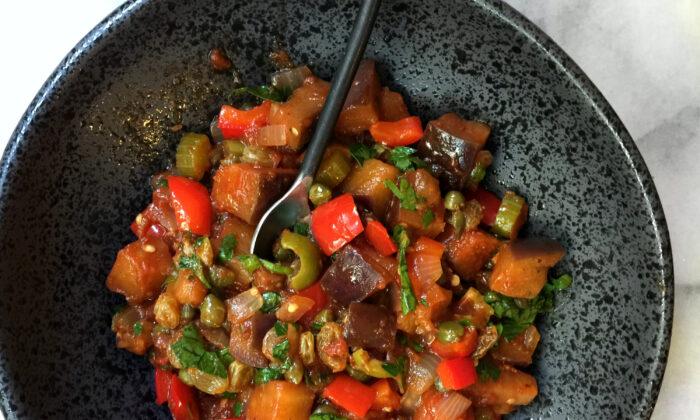

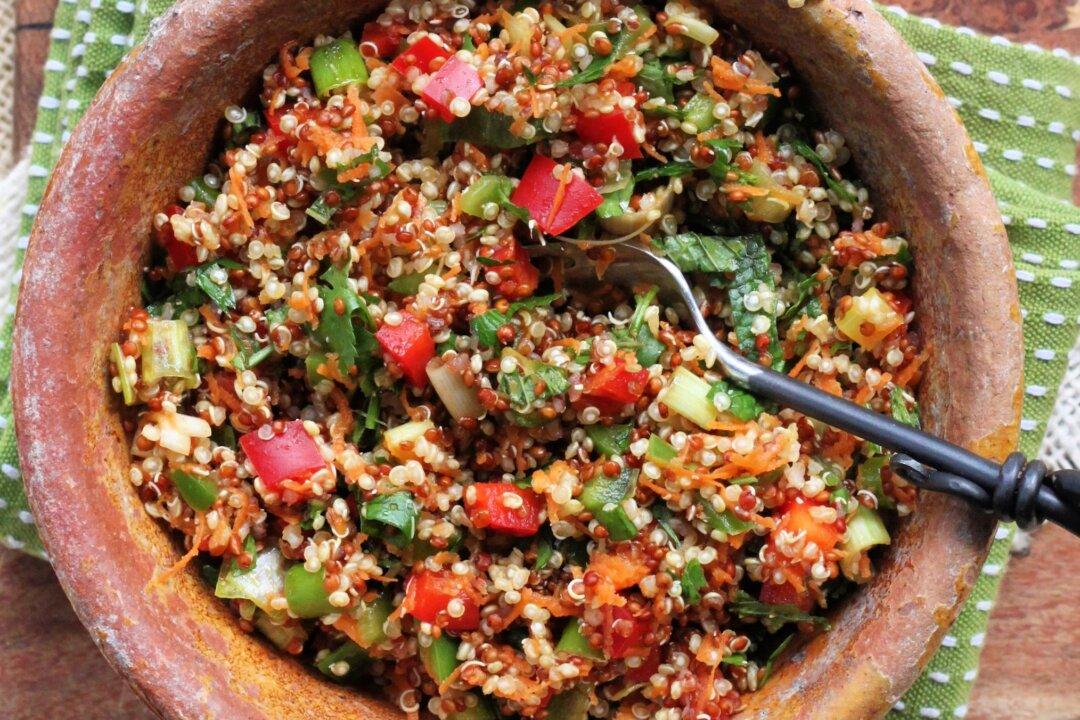
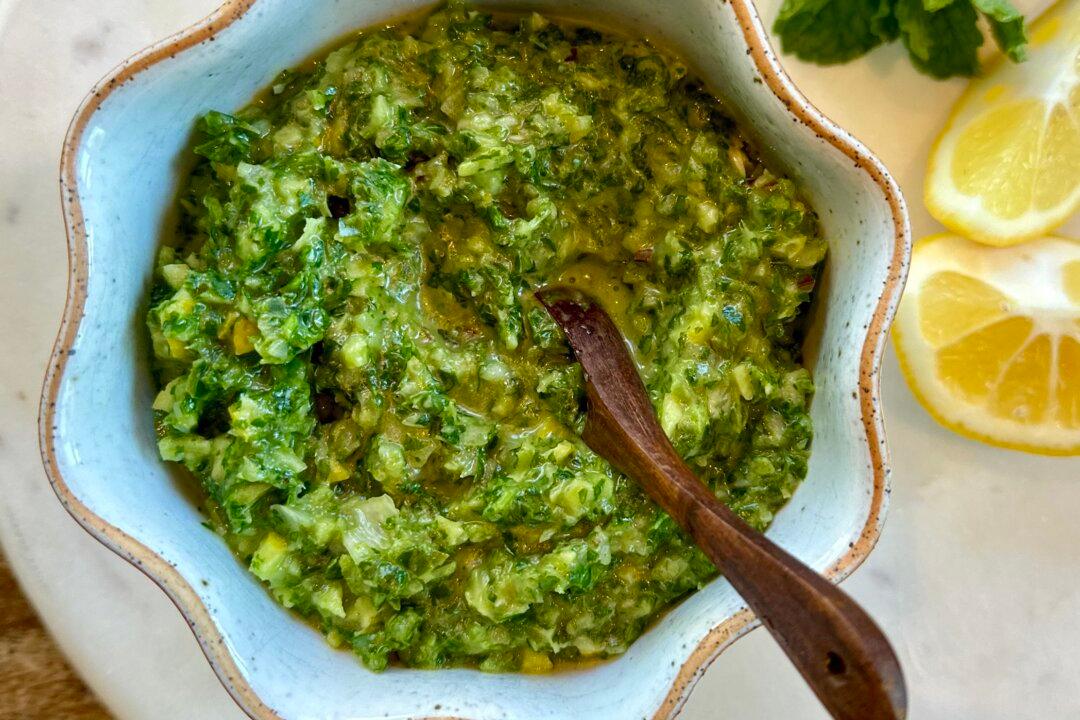
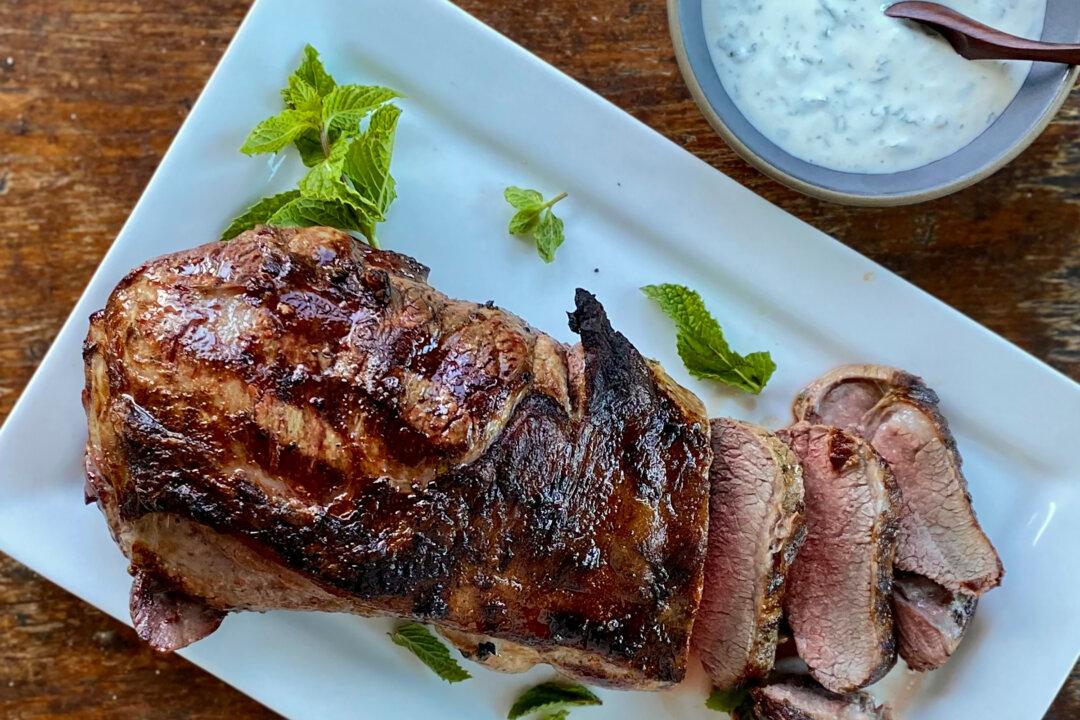
Friends Read Free